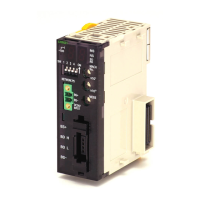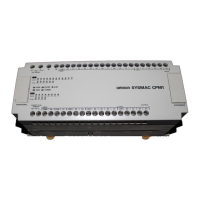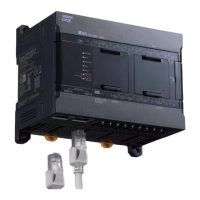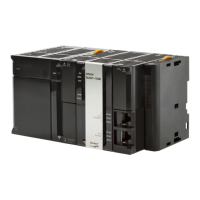1117
3. Instructions
CS/CJ/NSJ Series Instructions Reference Manual (W474)
Model Conversion Instructions
3
Model Conversion Instructions
Note The operation of the Conditions Flags differs in the following ways. Refer to the description of the Conditions Flags for
each instruction for details.
• The operation of the Conditions Flags differs for all instructions when the contents of a DM Area words used for indi-
rect addressing is not BCD (*BCD) or the DM Area addressing range is exceeded.
• For DISTC(566), the operation of the Conditions Flags differs in comparison with that for the C200H, C1000H, and
C2000H for the stack push operation.
• For COLLC(567), the operation of the Conditions Flags differs in comparison with that for the C200H, C1000H, and
C2000H for the stack read operation.
z Differences from Previous CS/CJ-series Instructions
Note The operation of the Conditions Flags differs in the following ways. Refer to the description of the Conditions Flags for
each instruction for details.
• The Error Flag will turn ON if the data for the above operands is not BCD.
• For DISTC(566), the operation of the Conditions Flags was added for the stack push operation.
• For COLLC(567), the operation of the Conditions Flags was added for the stack read operation.
DATA
COLLECT
COLLC(567) COLL(81) Along with data
collection operation,
provides stack read
operation not
previously
supported.
Same (data
collection operation
and stack read
operation)
Converted to COLL. If a word
address is specified for the
second operand (offset data),
it will need to be corrected
manually to binary data in the
program.
COLL is converted
to COLLC.
Operands do not
require correction.
MOVE BIT MOVBC(568) MOVB(82) Same Same Converted to MOVB. If a word
address is specified for the
second operand (control
data), it will need to be
corrected manually to binary
data in the program.
MOVB is converted
to MOVBC.
Operands do not
require correction.
BIT
COUNTER
BCNTC(621) BCNT(67) Same Same Converted to BCNT. If a word
address is specified for the
first operand (number of
words to count), it will need to
be corrected manually to
binary data in the program.
BCNT is converted
to BCNTC.
Operands do not
require correction.
Name
Model conversion
instruction (Unit Ver. 3.0 or
later and CJ2 CPU Units)
Corresponding
C-series instruction
Differences from previous CS/CJ-series instructions
Mnemonic
(function code)
Mnemonic
(function code)
BLOCK
TRANSFER
XFERC(565) XFER(70) The data type for the first operand (number of words to transfer) is BCD (0000 to
9999) instead of binary (0000 to FFFF hex).
SINGLE
WORD
DISTRIBUTE
DISTC(566) DIST(80) A stack push operation is supported in addition to the data distribution operation.
The data type for the third operand (offset data) is BCD (data distribution: 0000 to
7999, stack push: 0000 to 9999) instead of binary (0000 to FFFF hex).
DATA
COLLECT
COLLC(567) COLL(81) A stack read operation is supported in addition to the data distribution operation.
The data type for the second operand (offset data) is BCD (data distribution: 0000 to
7999, stack read for FIFO: 9000 to 9999, stack read for LIFO: 8000 to 8999) instead of
binary (0000 to FFFF hex).
MOVE BIT MOVBC(568) MOVB(82) The data type for the source and destination bit specifications in the second operand
(control data) is BCD (00 to 15) instead of binary (00 to 0F hex).
BIT
COUNTER
BCNTC(621) BCNT(67) The data type for the first operand (number of words to count) is BCD (0000 to 9999)
instead of binary (0000 to FFFF hex).
The data type stored for the third operand (count results) is BCD (0000 to 9999)
instead of binary (0000 to FFFF hex).
Name
Model conversion
instruction (Unit
Ver. 3.0 or later and
CJ2 CPU Units)
Correspond-
ing C-series
instruction
Differences from C-series instructions
When converting
device type to
CS/CJ with
CX-Programmer
Ver. 4.0 or lower
When converting
device type to
CS/CJ with
CX-Programmer
Ver. 5.0 or higher
Mnemonic
(function code)
Mnemonic
(function
code)
C200H, C1000H,
or C2000H
C200HS, C2000HX/
HG/HE(-Z), CQM1,
CQM1H,
CPM1/CPM1A,
CPM2C, or SRM1
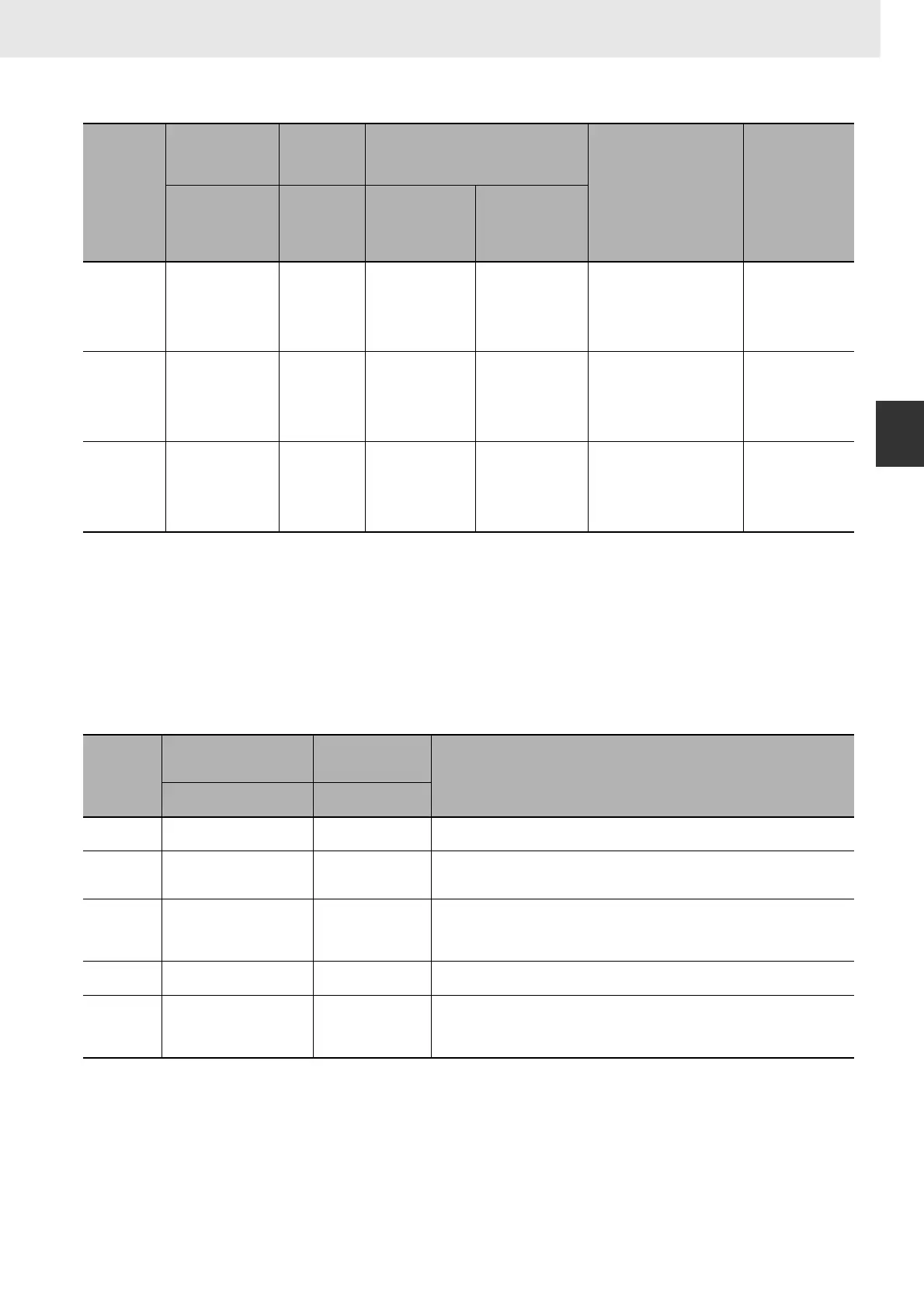